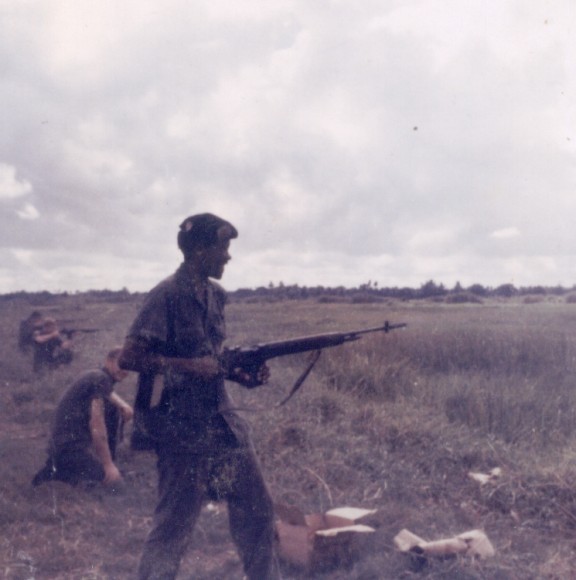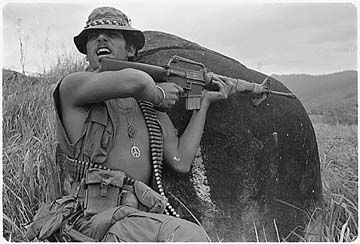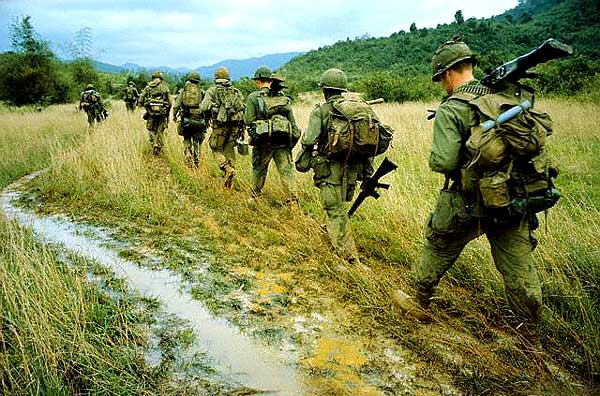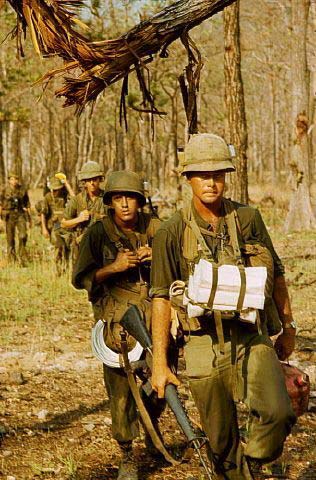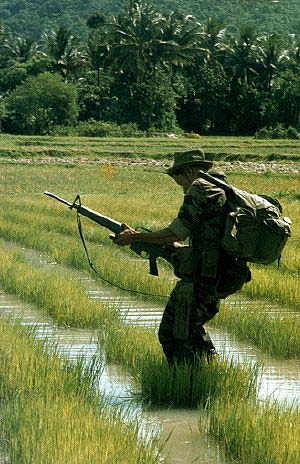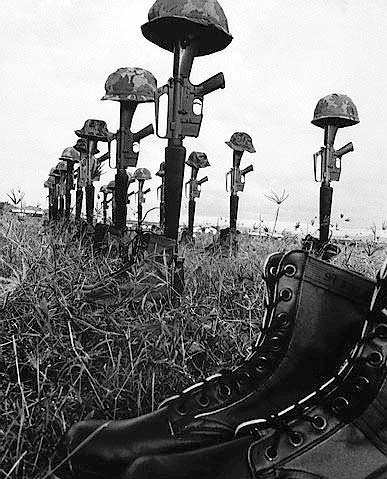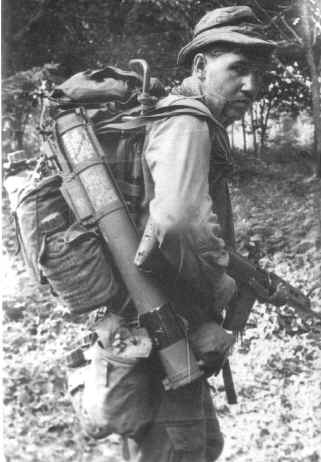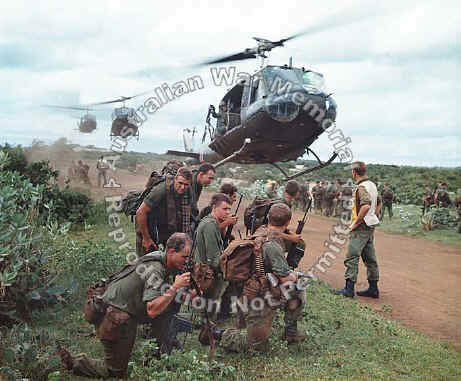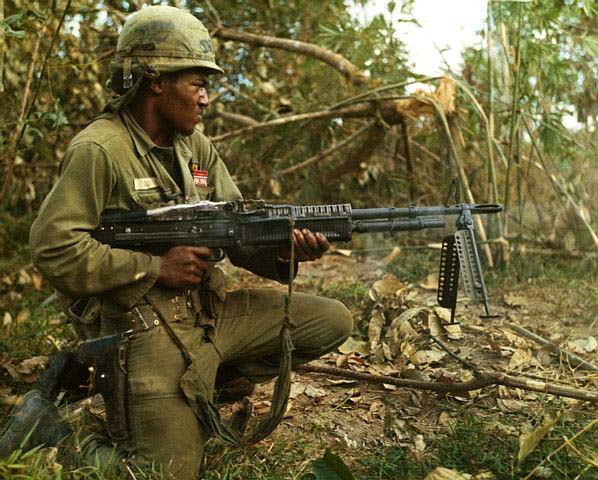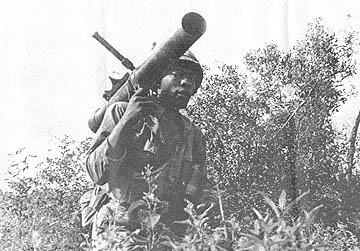The M-72 Light Anti-tank Weapon (LAW) Launcher
[b]* Length:[/b]
o Extended: less than 1 m (34.67 in).
o Closed: 0.67 m (24.8 in).
[b]* Weight:[/b]
o Complete M72A2: 2.3 kg (5.1 lb).
[b]* Firing mechanism:[/b] Percussion.
[b]* Front sight:[/b] reticle graduated in 25 m range increments.
[b]* Rear sight:[/b] peep sight adjusts automatically to temperature change.
[b]Rocket
* Caliber:[/b] 66 mm (2.6 in)
[b]* Length:[/b] 508 mm (20 in).
[b]* Weight:[/b] 1.8 kg (2.2 lb).
[b]* Muzzle velocity:[/b] 145 m/s (475 ft/s).
[b]* Minimum range (combat):[/b] 10 m (33 ft).
[b]* Minimum arming range:[/b] 10 m (33 ft).
[b]* Maximum range:[/b] 1,000 m (3,300 ft).
[b]Maximum effective ranges
* Stationary (point) target:[/b] 200 m (220 yd)
(Area target) 300 m
From: http://en.wikipedia.org/wiki/M72_LAW
More: http://world.guns.ru/grenade/gl12-e.htm
**The LAW was used mostly as a “bunker-buster” in Vietnam as U.S. troops had very few close encounters with NVA armor or vehicles.
Weighing 2.37-kg (5.2 pounds) complete, the LAW was designed as a discardable one-man rocket launcher primarily for use as an anti-tank weapon. In Vietnam however, the LAW was used almost exclusively as a bunker buster or for attacking entrenched enemies. When carried, the smooth-bore launcher tube was carried closed, and was watertight. In action, the end covers were opened by removing safety pins and the inner tube was telescoped outwards. This cocked the firing mechanism. Held over the shoulder, aimed by the simple sights, the weapon was fired by pressing the trigger button. The LAW Fired a 1-kg rocket to a maximum effective range of 300m. The rocket motor was fully burnt out by the time it left the launcher and resulted in a large back-blast danger area behind the firer. Once fired the tube was discarded. Due to it’s low weight, a number of complete assemblies could be carried in a squad with each person capable of packing at least two if necessary.
From:http://www.173rdairborne.com/weapons.htm#M-72,%2066mm%20Light%20Anti-tank%20Weapon%20(LAW)
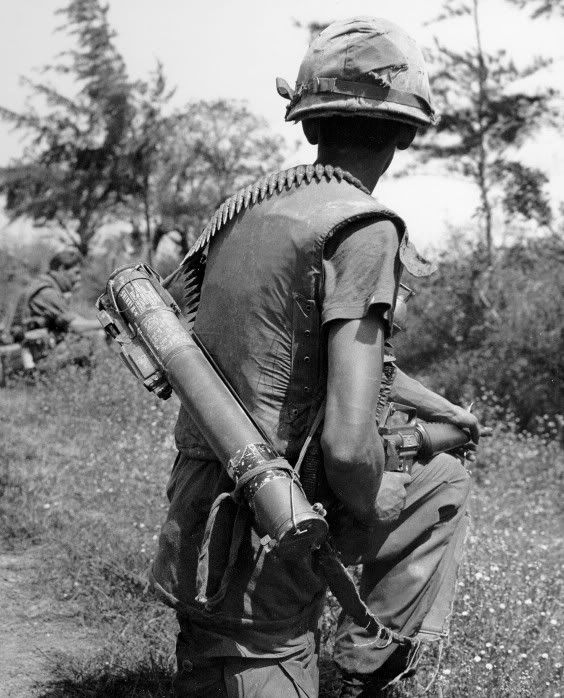

The M-79 Grenade Laucher
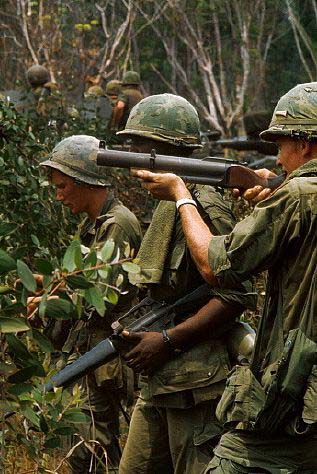
Making its debut in the Vietnam war, the US Army’s M79 grenade launcher or ‘Bloop gun’ was a completely new infantry weapon without an equivalent in any other armed force.
In the 1950s, the US Army had been researching new ideas for infantry weapons, one of which was SPIW the Special Purpose Individual Weapon. This was to be a high-tech rifle with sundry attachments making it capable of numerous functions.
One idea that developed was of making an attachment which would allow special grenades to be launched. To do this it was necessary to have a suitable grenade, and so the design departments developed a 40-mm high-explosive grenade fitted into a cartridge case. By the time this had been developed, the SPIW programme had been scrapped and so a weapon capable of firing the newly developed grenade now became necessary: this led to the M79 launcher (see Technical Specifications). The first of the new weapons were delivered to the Army in 1961.
Resembling a a large bore, single barrel, sawn-off shotgun, the grenade launcher was designed as a close-support weapon for the infantry. It plugged the gap in firepower between the maximum throwing distance of the hand grenade and the lowest range of supporting mortars, an area between 50 and 300-metres. The US Army added two M79s to the TO&E of the line infantry rifle squad and thus gave the squad an integral indirect fire weapon.
The M79 was a simple single-shot, single-barrel, shoulder-fired weapon which broke open for loading the 40mm grenade into the breech just like a shotgun. Once loaded and closed, the firer put it to his shoulder, took aim through a simple open sight, and pulled the trigger. It fired a spherical grenade which, although just 40mm in diameter, nevertheless had a kill radius of five metres. Firing a large grenade from such a lightweight weapon presented some problems, but the ammunition design was such that the whole thing became very controllable and consistent. A rubber pad was fitted to the shoulder piece of the butt stock to absorb some of the shock.
The designers revived a principle originated by the Germans during World War II, called the ‘High-Low Pressure System’. In this, the propelling charge is confined inside a small chamber in the base of the cartridge case, this chamber being provided with carefully calculated holes. When the cap is fired, the charge explodes inside this chamber and develops a very high pressure - in the region of 2500 kg/cm² . This, without some form of control, would blow the grenade out of the weapon at colossal speed and place extremely high pressure on the weapon breech. But the high pressure is confined to the special chamber in the cartridge case and via the specially designed holes ‘bleeds’ into the empty space of the rest of the cartridge case.
Here it expands and the pressure drops to about 200 kg/cm², enough to send the grenade out at about 76m/sec velocity and to a range of 350 to 400-metres, yet without placing excessive pressure on the body of the weapon. This enables the barrel to be thin in section and thus light in weight, without presenting a safety hazard for the user.
The grenades were stabilised in flight by fins and by spin imparted by grooves in the rifled barrel. The shell travelled with a muzzle velocity of only 75-metres per second (compared to around 800-metres per second for a machine gun) and a trained man could direct a grenade through a house window from 150-metres.
As the grenade spiralled through the air, the rotation caused weights in the fuze mechanism to arm the grenade when it had flown 30-metres, after which the grenade would detonate on impact. Thus, the warhead could not be accidentally detonated through a fall or bump or being struck by a bullet. The minimum range also prevented the launcher from placing himself in the grenade’s fragmentation radius.
There were a great variety of 40mm grenade cartridges which could be fired from the M79 grenade launcher. All of these cartridges were fixed munitions, consisting of a cartridge case and projectile. Among the options were a number of high-explosive grenades, including an airburst projectile, smoke, parachute smoke, flares and riot control CS gas-grenades.
The M-406 40mm HE grenades fired from the M79 contained enough explosive within a steel casing that upon impact with the target would produce over 300 fragments at 1,524 meters per second within a lethal radius of up to 5 meters.
For close range use the Army developed two shells for the M79. The first was a flechette round which housed approx 45 small darts in a plastic casing, these rounds were issued on an experimental basis. Later this round was replaced by the M-576 buckshot round. This round contained twenty-seven 00 buckshot which on firing was carried down the barrel in a 40mm plastic sabot which slowed down in flight so that the pellets could travel in their forward direction un-aided.
Generally operated with two M79 grenadiers joining with eight M16 riflemen to form a squad, the launcher could be used without ranging up to 150-metres (164 yards) and at this range a trained man could shoot grenades into a nominated windows of a house. At longer distances it was necessary to know how for away the target was because of the round’s unusually high trajectory. A large flip up sight was situated about half way down the barrel with a rudimentary leaf foresight fixed at the end of the barrel. The rear sight was calibrated up to 375-metres (410 yards) in 25-metre (27.3 yard) intervals.
The tactical use of the weapon required the gunner to be dedicated to the M79, and in order to use the weapon effectively the gunner needed to be encumbered by as little extra weight as possible. He therefore generally carried only a pistol as additional personal armament.
The overall length of the weapon was 737 mm (29 in) and its loaded weight was nearly 3 kg (6.6 lb). This small size and low weight made the M79 an ideal weapon in the close terrain of Vietnam. It had an approximate maximum range of 400 m (437 yd).
From: http://www.gruntonline.com/US_Forces/US_Weapons/us_weapons4.htm
More info. and specs.: http://en.wikipedia.org/wiki/M79_grenade_launcher
http://www.diddybop.demon.co.uk/blooper.htm
http://www.inetres.com/gp/military/infantry/grenade/M79.html
**The M-79 was withdrawn from service and replaced by the M203 system very late in the War. This was mainly due to the fact that M-79 grenadiers were vulnerable since they only had a .45 pistol, and the anti-personnel close range rounds were too tough to load, the enemy often knew it.
The XM148/M203 40mm Grenade Launcher system
** The M203 arose from combat experience and was developed for the Special Operations forces, as early as 1965, to give them additional firepower without losing a rifle in a small team. The concept was later adopted for regular infantry as well and was fielded by 1971, although it did not see widespread service at the height of the fighting.
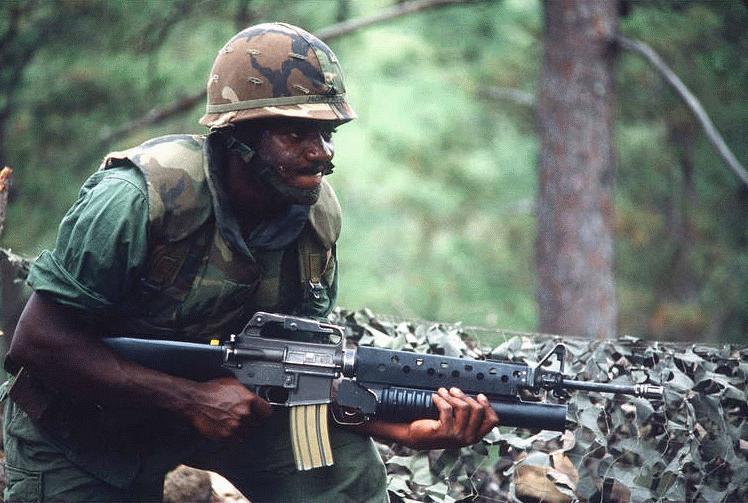
More info/specs.: http://www.fas.org/man/dod-101/sys/land/m203.htm
http://www.army.mil/fact_files_site/m203/index.html
http://en.wikipedia.org/wiki/M203
http://www.kitsune.addr.com/Firearms/Heavy/M203.htm

